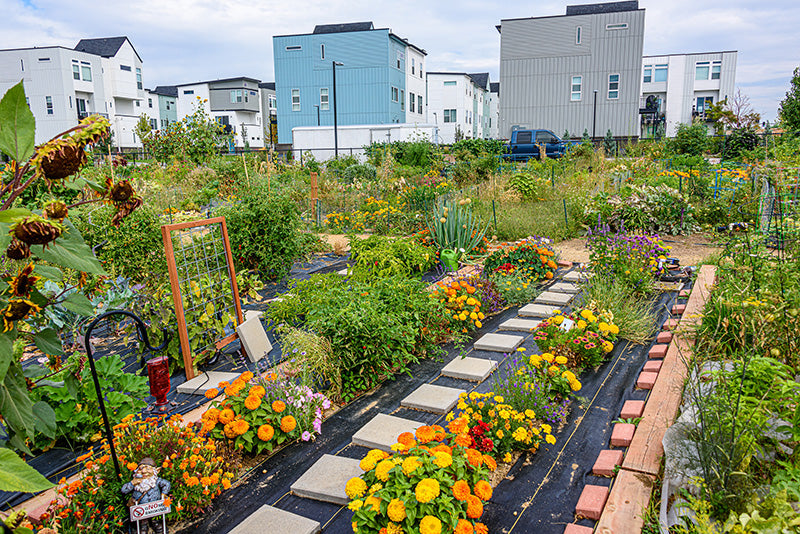By Michael Jenkins | June 6
Globally, food prices are skyrocketing, and many folks are looking for ways to lessen those expenses. This has lead to a renewed interest in community gardens. For those who may not know, a community garden is a shared garden space in which a group of folks come together to share both the work and the rewards. Community gardens offer solutions to many potential issues, include food costs, food deserts, neighborhood beautification, and urban renewal. A well-run community garden can add so much to a street or neighborhood, and starting a community garden can be a wonderful way to connect with nature, the earth, and your neighbors. So, how can you start a community garden in your community?
The most important starting component to a community garden is the community itself. You can’t go it alone—a successful community garden requires a group of people working together. Generally speaking, you’ll need at least three or four other people to get your community garden off the ground. Finding folks is a simple as doing a bit of research and outreach. Start with your neighbors, or the folks in the surrounding neighborhood if you have a location. Get in touch with local community organizations, churches, and the like. Reach out to local government and see if they have space or support they can give you. By building a community of people to work on your community garden with you, you’ll develop a network that can make many of the tasks so much easier.

This network can also help with the next step in building a community garden: finding the space. Ideally, your community garden space would fit your area’s requirements for a good garden: light, soil, and irrigation. However, with community gardens you may not be able to choose the ideal space, and that will require some flexibility on your part. Reaching out to local churches, schools, parks, apartment complexes—anything with some space that could potentially become a garden—is the key. You’ll need to discuss a few things with a potential host: water sources, access to the property, insurance and liability issues. It’s helpful to be both upfront and honest about what you need, and to get the agreement between your community garden and the site host in writing. This helps prevent any misunderstandings later on and ensures that your relationship with them remains productive for years to come.

Step Three is organizing your community garden, which entails a number of smaller steps we’ll discuss here. There are a number of things to think about: what is the primary mission or goal of your community garden? Which community do you serve? How will you divide the produce that your garden grows? Where will the money come from, and who keeps track of it? What other services or programs will your garden offer? What are the rules for use of chemical herbicides, pesticides, and fertilizers? What’s the maintenance schedule for weeding and watering? What is your leadership structure and how will decisions be made? Fleshing this all out upfront is another step in keeping things running smoothly and avoiding confusion.
Finally, we get to make our community garden! This involves tracking down the resources you need—soil, seeds, plants, tools, containers, and fertilizer. It make take some time to get the garden build, as all the folks involved likely have their own schedules and needs to deal with as well. The logistics of the garden will depend on your space. Raised beds and containers might be the easiest way to start as you remediate or improve existing soil. A healthy mix of perennials and annuals can be nice as well, offering a mix of garden veggies and fruiting trees or bushes. You’ll need to tap into your gardening know-how, creativity, and flexibility in order to make the most of your new space. On that topic: while planning your community garden, make sure you plan for the future as well. Your garden will grow and change over time, as all gardens do, and you’ll want to allow some space and flexibility for you community garden to evolve.
There’s so much more to say, but we hope this brief guide helps you get started. Running a community garden can be hugely rewarding, both to the folks involved and the whole community around them. If you have a community garden and would like to offer some advice or input, reach out in the comments section or find us on social media. Likewise if you have a question about community gardening, get in touch—we love to hear from you!

Leave a comment